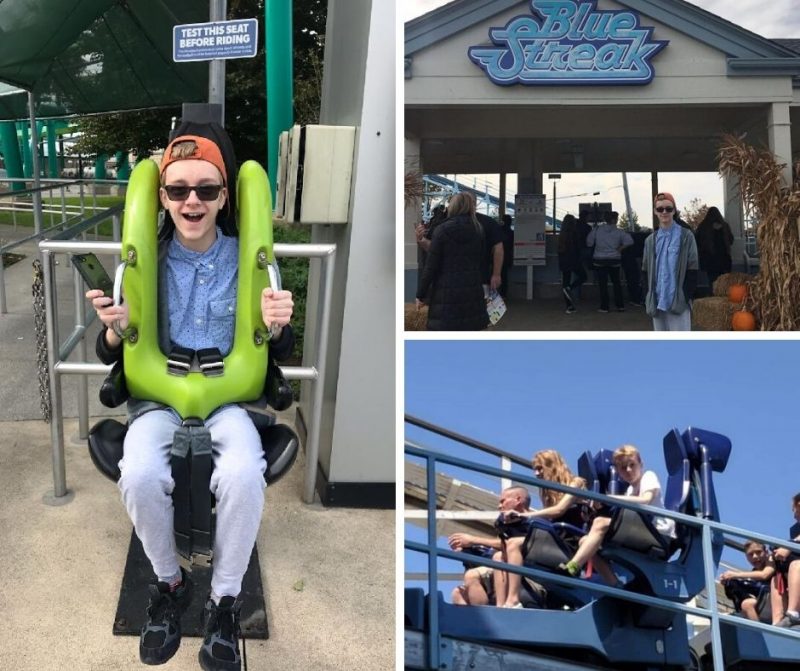
Despite being a roller coaster enthusiast, Matt Hill had to put his YouTube channel devoted to reviewing roller coasters on hold for the summer due to spinal fusion surgery.
For 14-year-old Matt Hill the news that he needed scoliosis surgery was far from welcome. It meant the rollercoaster aficionado had to keep two feet on the ground and sit out the already short Ohio coaster season last summer. A freshman at Hoover High School in Canton, Matt has been a platinum pass holder at Cedar Point since age 10 and even hosts his own YouTube channel devoted to reviewing coasters across the nation.
For Matt’s parents the diagnosis of idiopathic scoliosis at age 11 came as a complete surprise. Matt’s dad, Jeff, said it wasn’t until he watched Matt stand next to a family member to pose for a photo that it dawned on him that something wasn’t right.
“I never noticed it before, but Matt looked like he was crooked,” Jeff said. “He wasn’t standing straight.”
According to Matt’s mom, Patricia Davison, it was at Matt’s 11-year-old well-child visit that his pediatrician pointed out what may be causing the issue.
“When Matt took his shirt off our pediatrician noticed he had a significant curve in his back,” she said.
Referred to Akron Children’s orthopedic department, Dr. Todd Ritzman diagnosed Matt with idiopathic scoliosis, a condition that can occur without warning or reason, but often comes on during the adolescent growth spurt and is not caused by things like carrying a heavy backpack, bad posture or playing sports.
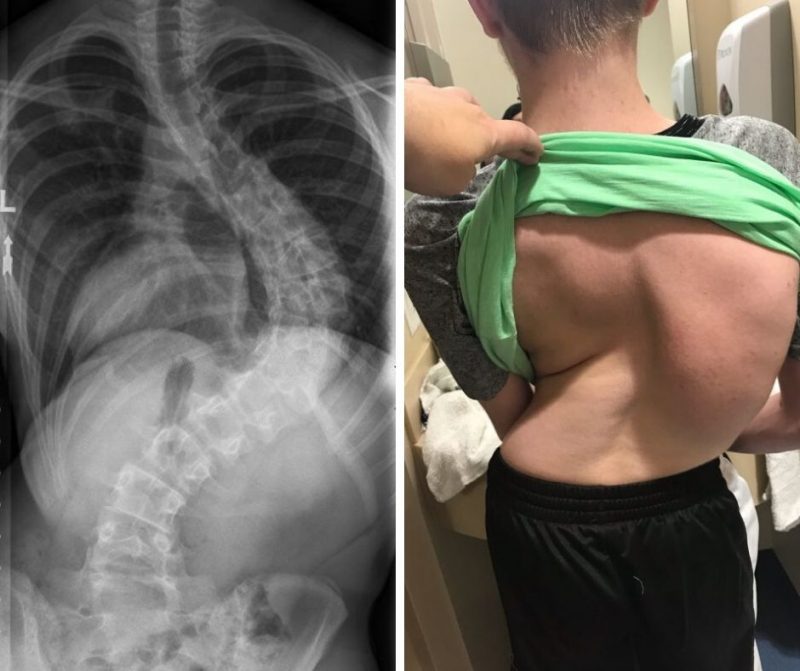
Matt’s X-ray showed his curvature had progressed significantly in just over 2 years.
“When we initially met Matt, he had a moderately sized 30-degree scoliosis,” said Dr. Ritzman. “For patients with significant growth remaining, we recommend bracing with the goal of preventing curve progression during the remainder of the adolescent growth spurt. Most patients tolerate bracing quite well, however, some, like Matt, are unable to utilize a brace consistently.”
Matt says when he wore the hard, plastic brace that encased his body from his chest to hips he felt like he couldn’t breathe, and it made him feel claustrophobic.
“In just over 2 years Matt’s curve progressed from 30 degrees to 102 degrees,” said Patricia. “That’s when Dr. Ritzman sent us to see a neurosurgeon to evaluate Matt’s spinal MRI. He wanted to make sure there was nothing else going on, like a cyst applying pressure to the spinal cord, that could be contributing to Matt’s rapid curve progression.”
“In scenarios like this, there is often an underlying abnormality of the spinal cord causing the scoliosis,” said Dr. Ritzman. “Fortunately, Dr. (Gwyneth) Hughes, pediatric neurosurgeon, did not feel there was any indication for additional neurosurgical treatment and cleared Matt to proceed with our recommendations.”
Since Matt’s spine had become too crooked to straighten safely all at once, Dr. Ritzman recommended Halo-gravity traction – a way to stretch the spine slowly into a straighter position. The treatment, guided by Dr. Micah Baird, director of the division of pediatric physiatry and the hospital’s team of rehabilitation nurses and therapists, uses 50% of a patient’s body weight applied over time as traction for 23 hours per day for approximately 1 month.
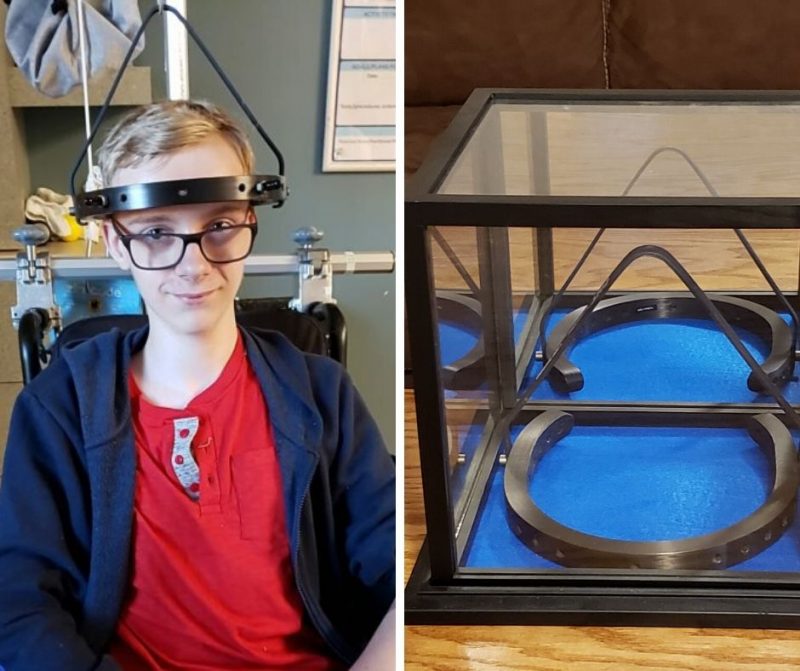
Matt was in halo-gravity traction for approximately 1 month prior to surgery. Matt’s mom, Patricia Davison, says he now keeps the halo in a glass showcase to remind himself each and everyday how brave he is and what he has overcome.
“Halo-gravity traction enables safe, gradual correction of 30-40% of the spinal curvature, rendering the surgical fusion procedure less complex and markedly lowering surgical risk,” said Dr. Ritzman.
On June 11, 2019 Matt entered Akron Children’s to have his halo placed by Dr. Ritzman who inserted metal pins in his skull to keep the halo in place. Patricia said one of her biggest worries was how Matt, who suffers from anxiety, would deal with being in a halo and hospitalized.
“The halo actually wasn’t that bad,” said Matt. “I expected it to be 100 times worse than it was. When they went to tighten the pins down, it hurt a little, but wasn’t too bad. I mainly passed the time talking to family and watching movies and YouTube.”
Traction is applied while in bed, in a wheelchair or in a walker and patients participate in 6-8 hours of therapy daily preparing for their final surgery. In a little over a month the halo helped reduce Matt’s curve from 102 degrees to 69 degrees making surgery safe.
“Matt and his family’s commitment to halo-gravity therapy ultimately led to an extremely efficient, safe operative day with excellent curve correction and a rapid recovery,” said Dr. Ritzman.
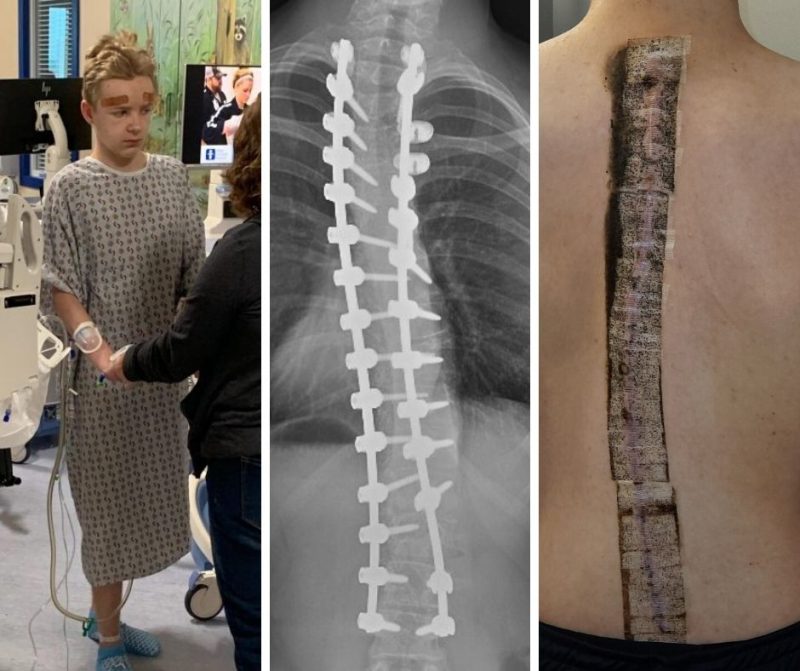
Matt was up and walking almost immediately after spinal fusion surgery. An x-ray shows the rods and hardware in his back. The surgical incision extends from Matt’s neck to his waist.
Now 7 months post op, Matt is adjusting to life 4.5 inches taller than he used to be.
“Before surgery Matt couldn’t eat much because his organs were so twisted it put pressure on his stomach,” said Jeff. “Although it took him time to readjust, he is enjoying eating again and doesn’t have to worry about making himself sick if he eats too much.”
Matt has big plans for this coming summer after spending last summer ‘grounded’ from his beloved coasters.
“The main trip I’m looking forward to is my Virginia/Maryland trip where we’re going to Kings Dominion, Busch Gardens Williamsburg and Six Flags America,” he said.
No doubt the subscribers to his YouTube channel called Downhill Adrenaline will be anxiously awaiting his reviews and rankings. Matt, who post-surgery, no longer suffers from shortness of breath after walking for long periods, says he is looking most forward to riding the Intimidator 305 located at Kings Dominion in Virginia.
“It might be my No. 1 coaster after this,” he said. “I guess we’ll just have to wait for my review to see!”
To learn more about the Akron’s Children’s Spine Program, visit the program page at akronchildrens.org.
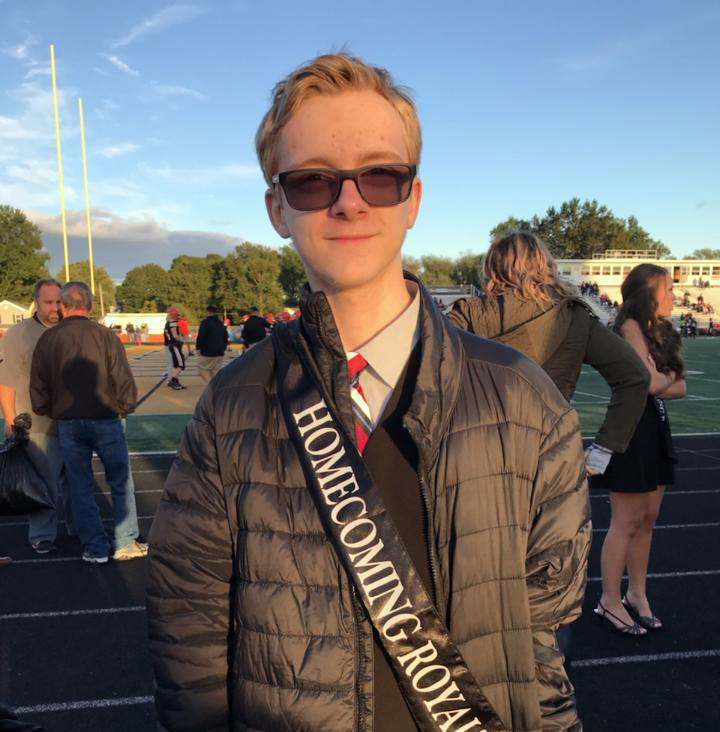
Matt was elected as freshman attendant for the Hoover High School homecoming court.










